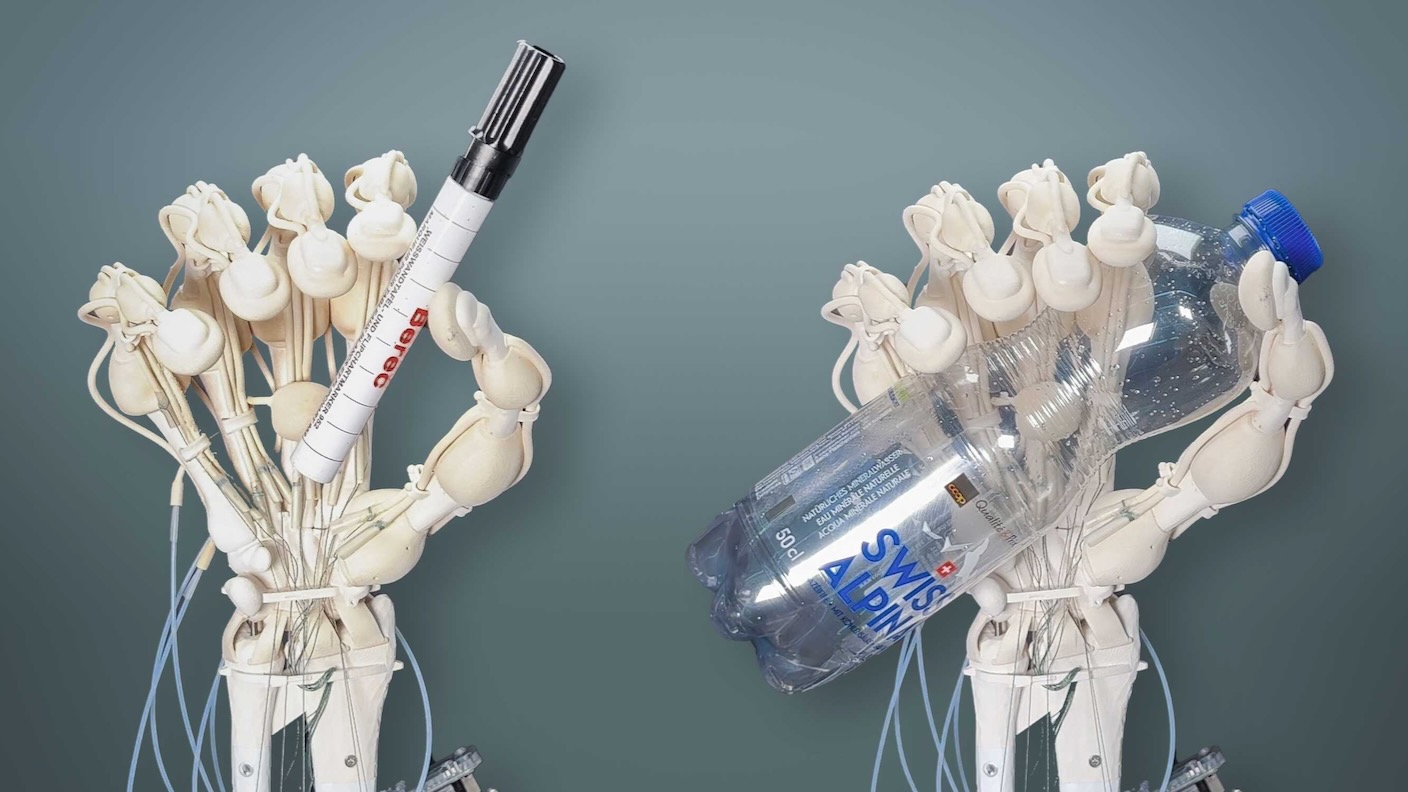
Scientists have created the most human-like robotic hand ever, complete with 3D-printed bones, ligaments and tendons.
The breakthrough — the 3D printing of a mixture of hard and soft parts by cross-layering up to four plastics — could be used to create more complex and durable robots, according to the researchers who developed it.
The result is a firm but soft robotic part that can scale, unlike other soft robots that struggle to maintain their physical properties at larger sizes, according to their findings published Nov. 15 in the journal Nature.
The technique, known as vision-controlled jetting (VCJ), probably won’t be used to create the life-like Androids we know from shows like "West World" anytime soon. But they could make automated industries much safer.
Related: Tiny, shape-shifting robot could one day be used to perform surgery from inside the body
"Robots made of soft materials, such as the hand we developed, have advantages over conventional robots made of metal," first author Robert Katzschmann, a professor of robotics at ETH Zurich, said in a statement. "Because they're soft, there is less risk of injury when they work with humans, and they are better suited to handling fragile goods."
Although the robots that work alongside humans in factories malfunction rarely, they can be deadly when they do. On Nov. 8, a South Korean man was crushed to death on a conveyor belt when an industrial robot mistook him for a box of bell peppers.
Robots today are also inflexible and lack the intricate internal structures needed to perform complex movements and tasks humans can easily perform, according to the researchers. Many, such as metal implants, are ill-suited for use in medical contexts too — causing inflammation when human bodies detect a difference between their stiffness and that of the surrounding tissue.
To solve this problem, the scientists set about 3D printing a range of devices (including a six-legged robot, a functional heart pump and a material that absorbs vibrations from its surroundings) that mimic the complexity of nature’s biomechanics.
To do so, they developed a way to 3D print slow-curing plastics. Unlike fast-curing polyacrylates used in traditional 3D printing, VCJ gives each layer of the robotic part more time to set — resulting in a more durable and elastic printed component. Cameras and lasers guide the printer so that each layer is built up with the correct thickness.
"We wouldn't have been able to make this hand with the fast-curing polyacrylates we've been using in 3D printing so far," Thomas Buchner, a doctoral student at ETH Zurich, said in the statement. "We're now using slow-curing thiolene polymers. These have very good elastic properties and return to their original state much faster after bending than polyacrylates [the standard polymers used in 3D printing].”







